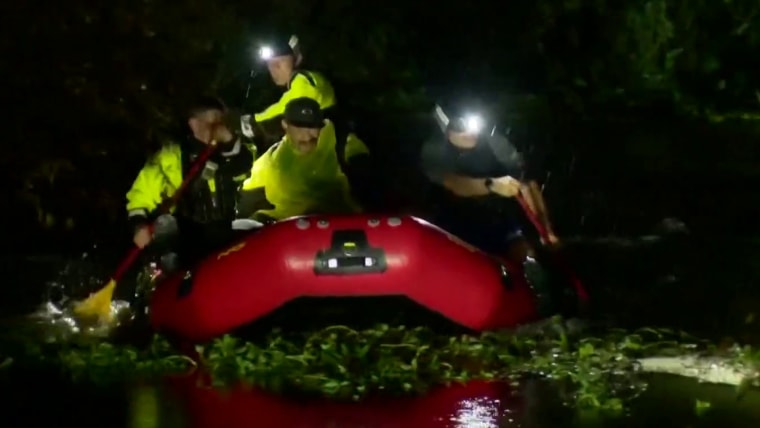
California is bracing for life-threatening conditions as a powerful atmospheric river sweeps across the state, triggering mandatory evacuations, flood alerts, and widespread safety warnings. The intense storm system is expected to deliver several inches of heavy rain, raising fears of flash floods, mudslides, and fast-moving debris flows—especially in regions still recovering from recent wildfires.
This atmospheric river, a long plume of moisture stretching from the Pacific, is set to unleash relentless rainfall across Southern California and parts of the Southwest. Meteorologists warn that some areas could see 3 to 6 inches of rain, with mountain and foothill regions at risk of receiving far more. For communities sitting below burn scars, the danger is even more severe.
Burn-scar zones—areas left scorched and unstable after wildfires—are extremely vulnerable during intense rainfall. The soil in these regions becomes hydrophobic, causing water to run off rapidly instead of absorbing into the ground. As a result, even moderate rainfall can produce sudden mudslides and debris flows capable of destroying homes, blocking roads, and threatening lives.
Local officials in Los Angeles, Ventura, and surrounding counties have issued evacuation orders and warnings for neighborhoods near the Palisades, Eaton, and other recent fire scars. Emergency personnel are going door-to-door urging residents to pack immediately and prepare to leave at short notice. Shelters have opened across the region for families and pets who need safe refuge from the storm.
Forecasters say the heaviest rainfall will strike late Friday through early Saturday. Flood watches are in effect for millions of people, with the National Weather Service warning that flash flooding is “highly likely” in low-lying areas, canyons, and near riverbeds. Already, several roadways have been closed due to rockslides and rising water, and transportation officials expect more closures as conditions worsen.
The storm’s impacts extend beyond heavy rain. Strong wind gusts—potentially reaching 60 to 80 mph in some exposed areas—may topple trees and power lines. Meanwhile, higher elevations could receive significant snow, further complicating travel across mountain passes.
While California desperately needs rainfall after prolonged drought, atmospheric river events often bring more harm than help. The state’s rugged terrain, combined with unstable post-fire landscapes, creates an ideal setup for dangerous flooding and erosion. Experts note that even a single, slow-moving atmospheric river can cause widespread damage if moisture continues pooling over the same regions.
Authorities are urging residents to avoid unnecessary travel, stay alert to emergency notifications, and keep clear of flood-prone areas such as creeks, canyons, and dry washes. Water levels can rise suddenly and with little warning, making conditions particularly hazardous.
As the storm continues to push inland, emergency crews remain on high alert—preparing for rescue operations, road closures, and rapid-response measures. The next 48 hours will be critical as California endures one of its most intense atmospheric river events of the season.
Watch video below :












